Fishing in Logan
Our rivers are popular with anglers hoping to catch a bite. We encourage fishing from pontoons located at various Parks along the Logan River and the Albert River.
Pontoons provide:
- easy access to the water
- seating
- a place to set your line
- bins for you to dispose of unwanted fishing line and tackle.
Where to fish
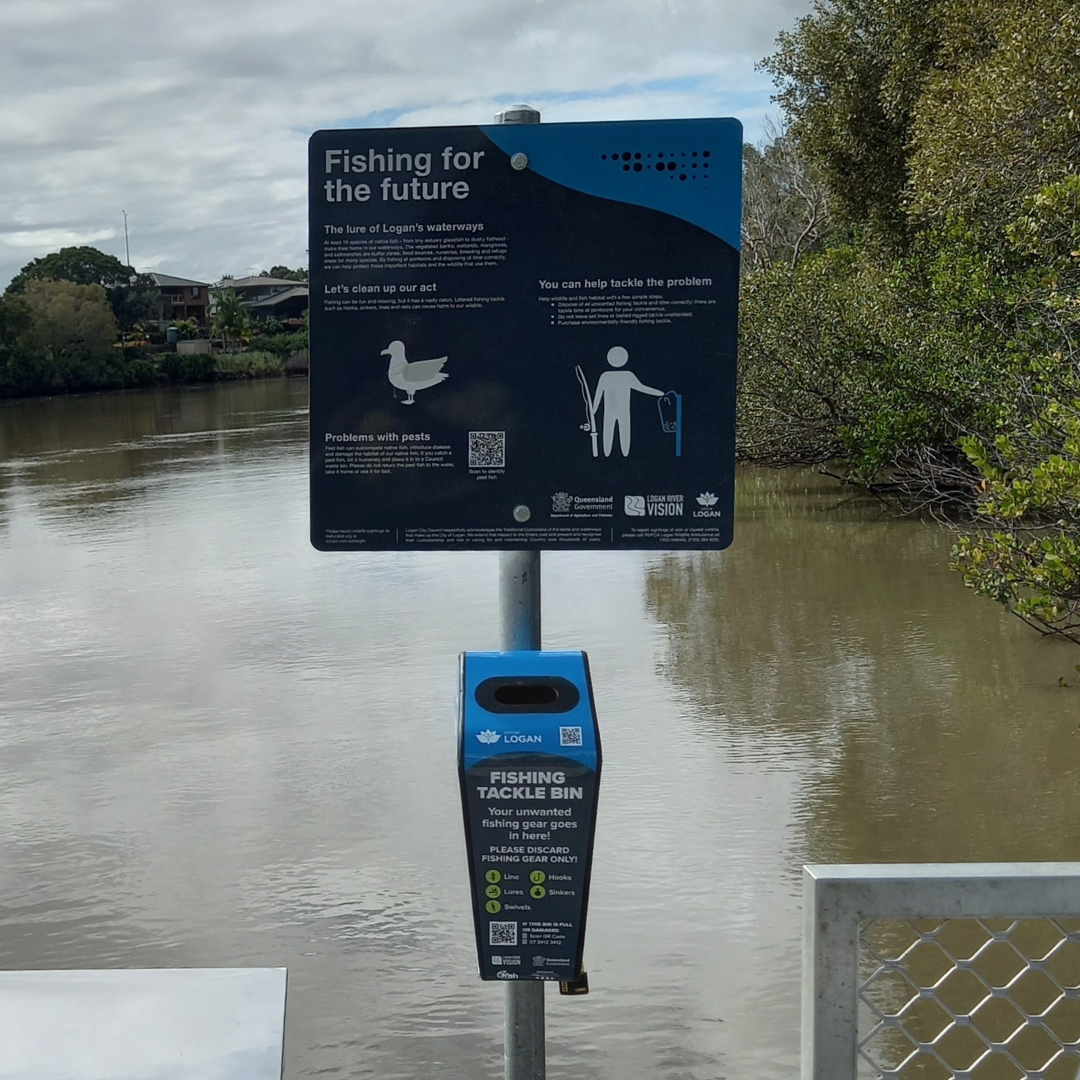
It is best not to fish in our urban creeks and waterbodies. Even with small amounts of rain, there is high potential for urban pollutants to be present. Many of these areas are breeding grounds and safe havens for our urban wildlife.
We encourage residents and visitors to fish along the Logan and Albert Rivers. Fishing infrastructure is available to support this activity and keep both you and wildlife safe. You can find pontoons at:
- Albert River Park, Eagleby
- Alexander Clark Park, Loganholme
- Logan River Parklands, Eagleby and Beenleigh
- Riedel Park, Carbrook
- Riverdale Park, Meadowbrook
- Skinners Park, Carbrook
Fishing tackle bins and fish cleaning stations are also available at the following locations where you can fish from the riverbank:
- Federation Drive Reserve, Bethania
- Larry Storey Park, Waterford
- Lawrence Park (Wharf Road), Eagleby
- Tansey Park, Tanah Merah
Responsible fishing
Responsible fishing is the way of the future. It ensures we maintain and protect fish habitat and numbers.
Fishing litter such as hooks, weights and lines cause injury and death to thousands of native animals every year. For example:
- hooks can become embedded in, or even pierce an animal's skin
- hooks, line and weights can be swallowed, causing internal blockages, injury and poisoning
- line can wrap around an animal, cutting off the blood supply
- wildlife entangled in line may suffer a slow death due to starvation.
To fish responsibly and safeguard wildlife you can:
- Place your unwanted fishing line and tackle in a bin. We are rolling out fishing tackle bins at popular fishing locations across Logan. These have been specially designed to collect fishing litter. Fishing tackle bins are currently installed at:
- Albert River Park, Eagleby
- Alexander Clark Park, Loganholme
- Federation Drive Reserve, Bethania
- Larry Storey Park, Waterford
- Lawrence Park (Wharf Road), Eagleby
- Logan River Parklands, Eagleby and Beenleigh
- Riedel Park, Carbrook
- Riverdale Park, Meadowbrook
- Skinners Park, Carbrook
- Tansey Park, Tanah Merah
- Tygum Park, Waterford West
- Take unwanted fishing line home and cut it into small pieces. Put it in the bin or use a fishing tackle bin if available.
- Be aware of surrounding trees – line caught in foliage can entangle wildlife.
- Don’t leave baited tackle unattended – remove bait from the hook and put the tackle in a safe place.
- Use a bait box.
- If using a boat with an inboard motor, avoid releasing bilge water into waterways and use absorbent materials to soak up fuel and oil.
- To avoid hooking a non-target animal if you notice one nearby, stop fishing and wait for it to move away or move a short distance upstream or downstream.
Nets and traps
If you use a net or trap, do not use funnel (opera house) traps.
Although banned in Victoria, New South Wales, the Australian Capital Territory, Tasmania, South Australia and Western Australia, these are still sold throughout Queensland. These traps can kill native wildlife such as platypus, rakali and turtles by drowning them, as they are unable to escape the funnel opening. Air breathing mammals instinctively swim upward to reach the water's surface. In opera house nets they cannot find the opening. These animals can only hold their breath for a couple of minutes, so leaving your net and coming back after a short while can still result in deaths.
Use a cray drop net (collapsible trap) or an open top pyramid trap. These traps are safe for these animals and still perform well for your catch.
Find out more about Queensland recreational fishing rules, including no take species.
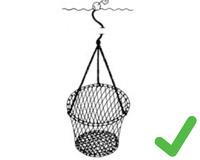
Cray drop net
Cray drop nets are suitable for fishing. The netted bucket shaped trap with a large round opening at the top allows non-fishable creatures to swim upwards and out of the net.
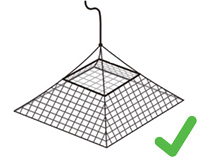
Open top pyramid trap
Open top pyramid traps are suitable for fishing. The four-sided pyramid-shaped frame covered in netting, has a single rigid square opening at the top. They also come in collapsible designs. This net allows non-fishable creatures to swim upwards and out of the net.
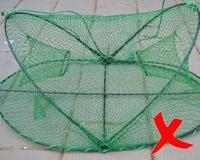
Opera house fishing net
Do not use opera house fishing nets. The netted dome has small netted tunnel openings located on the sides of the trap. The design does not allow non-fishable water creatures to swim upward and out of the net.
Protecting native fish
The population of many native fish species in Australia has declined due to urban development. This decline has affected many of our local species, including:
- Jungle Perch
- Australian Bass
- Freshwater Mullet.
To protect native fish populations, we always encourage responsible recreational fishing. To find out about no-take species and fish identification, visit Queensland Government.
You can do your part by being aware of important fish habitats. Habitats like vegetated banks, wetlands, mangroves and saltmarshes are important buffer zones, food sources, nurseries, breeding and refuge areas for many species.
You should leave this vegetation as it is and abide by boating go-slow zones. This will help reduce erosion of riverbanks and shorelines from boating wave action. Don't remove fallen trees, branches or logs from the water. This woody habitat provides shelter from heat, predators and higher water flows. It also provides breeding areas for fish and plays a part in the food chain by attracting very small fish (prey species), waterbugs and biofilms.
You can enjoy your fishing experience and play your part in conserving the fish population by using the catch and release method.
To learn about the best practices for fish handling, visit NSW Department of Primary Industries. You can also find out more about recreational fishing at Queensland Government. Please don't release any pest fish back into the water.
You could also join a local fishing group like OzFish Unlimited, which undertakes fish habitat restoration projects, or a local bushcare group. Council has also developed the Logan and Albert Rivers Fish Habitat Enhancement Plan 2020–2035 (PDF 18 MB) to enhance native fish populations and other aquatic fauna in the Logan and Albert Rivers.
Pest fish
Keep an eye out for pest fish. Pest fish can displace native fish, introduce parasites and disease and alter the habitat our native fish need to grow and reproduce.
There are many pest fish species present in South East Queensland waterways. These species are listed in the Queensland Biosecurity Act 2014 (in Part 6 and Schedule 2):
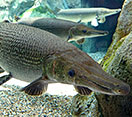
Alligator gar (Atractosteus spatula)
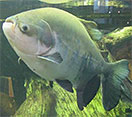
Black pacu (Piractus brachypomus)
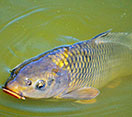
Carp
(Cyprinus carpio)
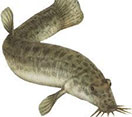
Chinese weatherfish (Misqurnus anquillicaudatus)
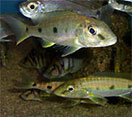
Giant and Yellow belly cichlids (Boulengerochromis microlepsis)
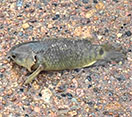
Climbing perch (Anabas testudineus)
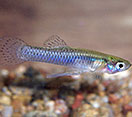
Gambusia (Gambrusia holbrooki)
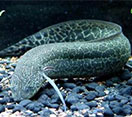
Marbeled lungfish (Protopterus aethiopicus)
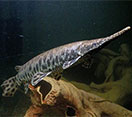
Spotted gar (Lepisosteus oculatus)
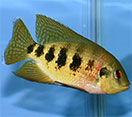
Tilapia maria (Oreochromis mossambicus)
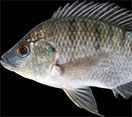
Tilapia oreochromis (Tilapia marieae)
If you catch a pest fish, please kill the fish immediately and humanely. Ensure the dead fish is either buried or placed into an appropriate Council garbage bin. Please do not return a restricted noxious fish to the water or use the pest fish for bait.
Report illegal activities relating to pest fish immediately to Biosecurity Queensland by phoning 13 25 23.